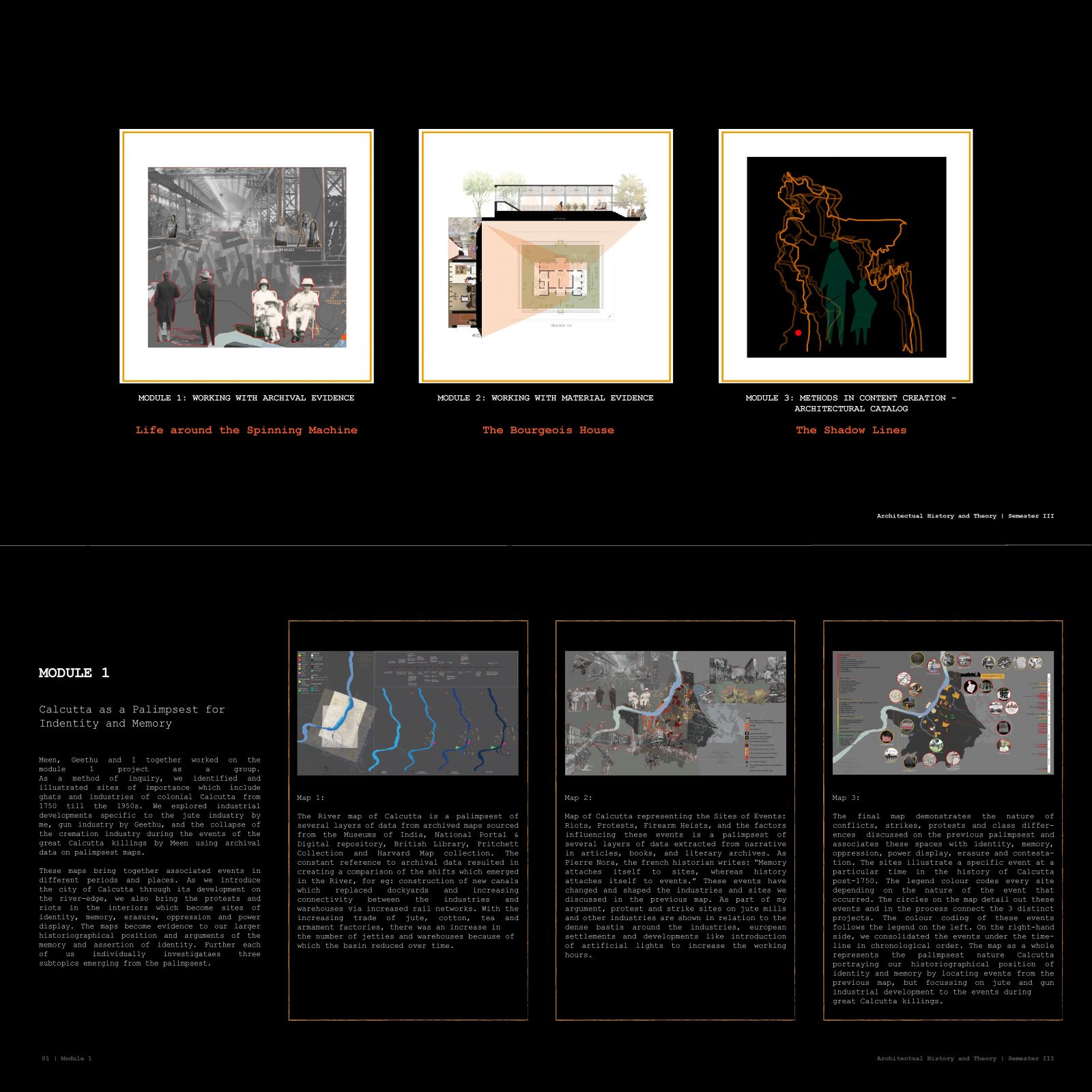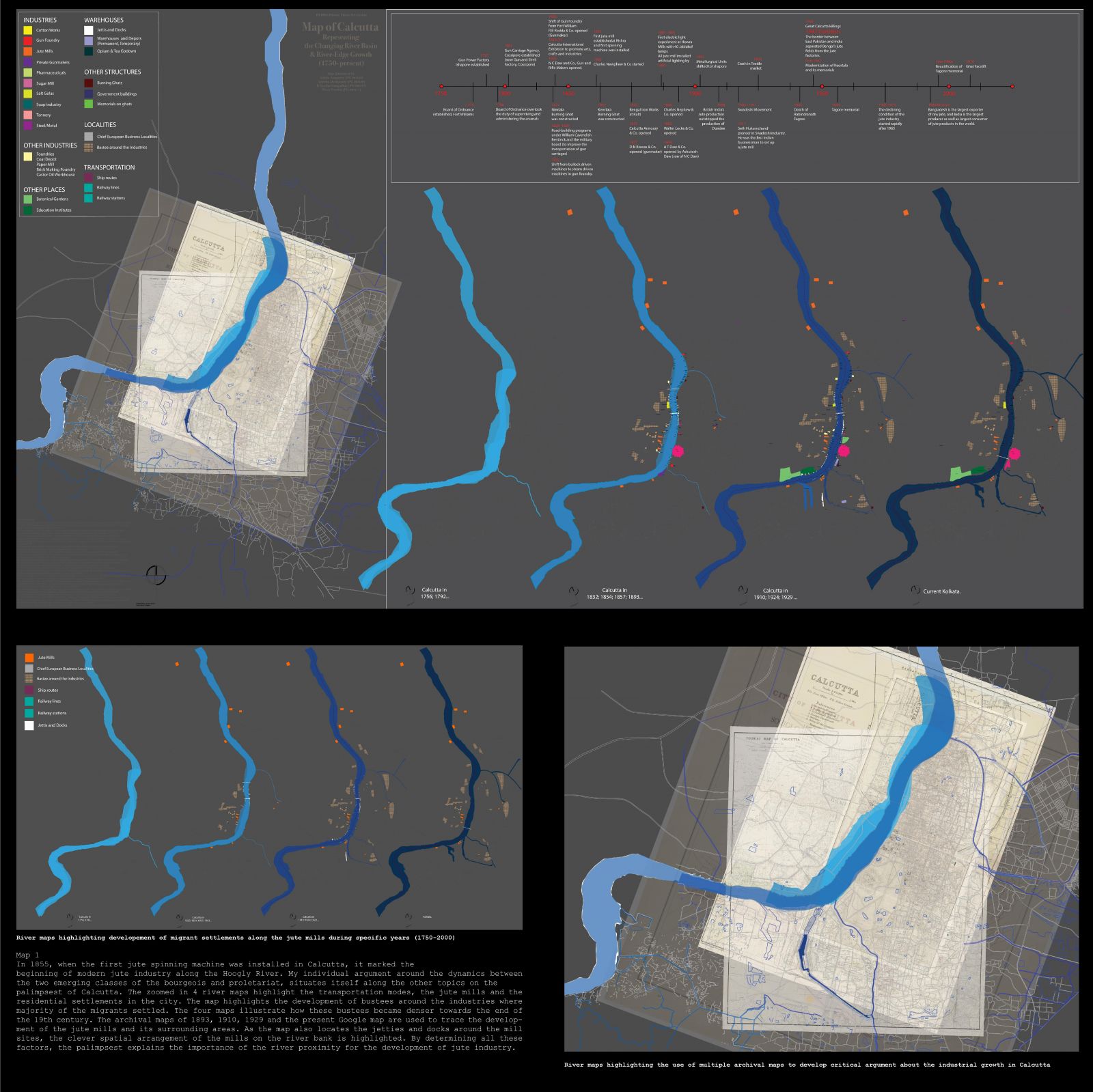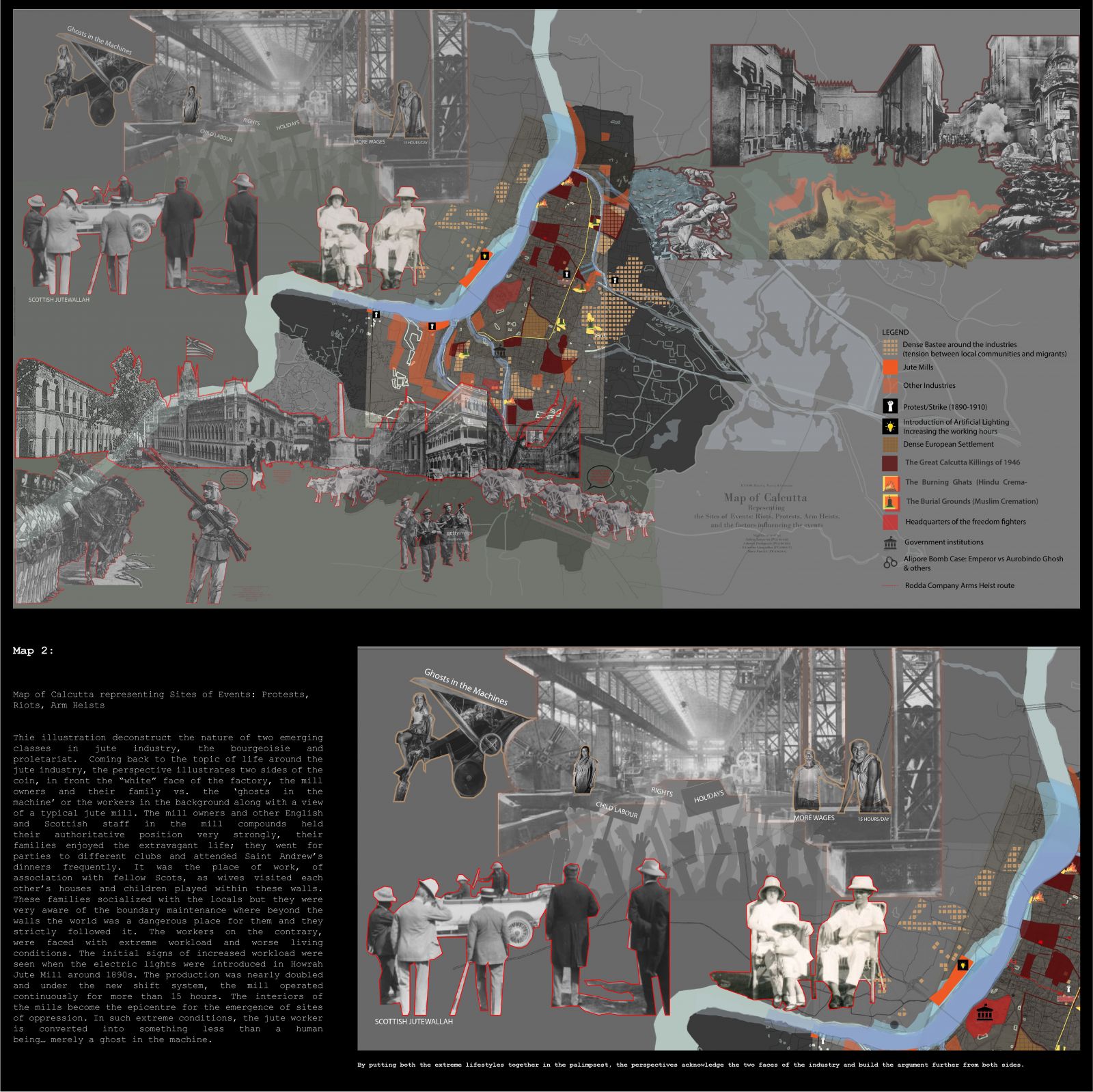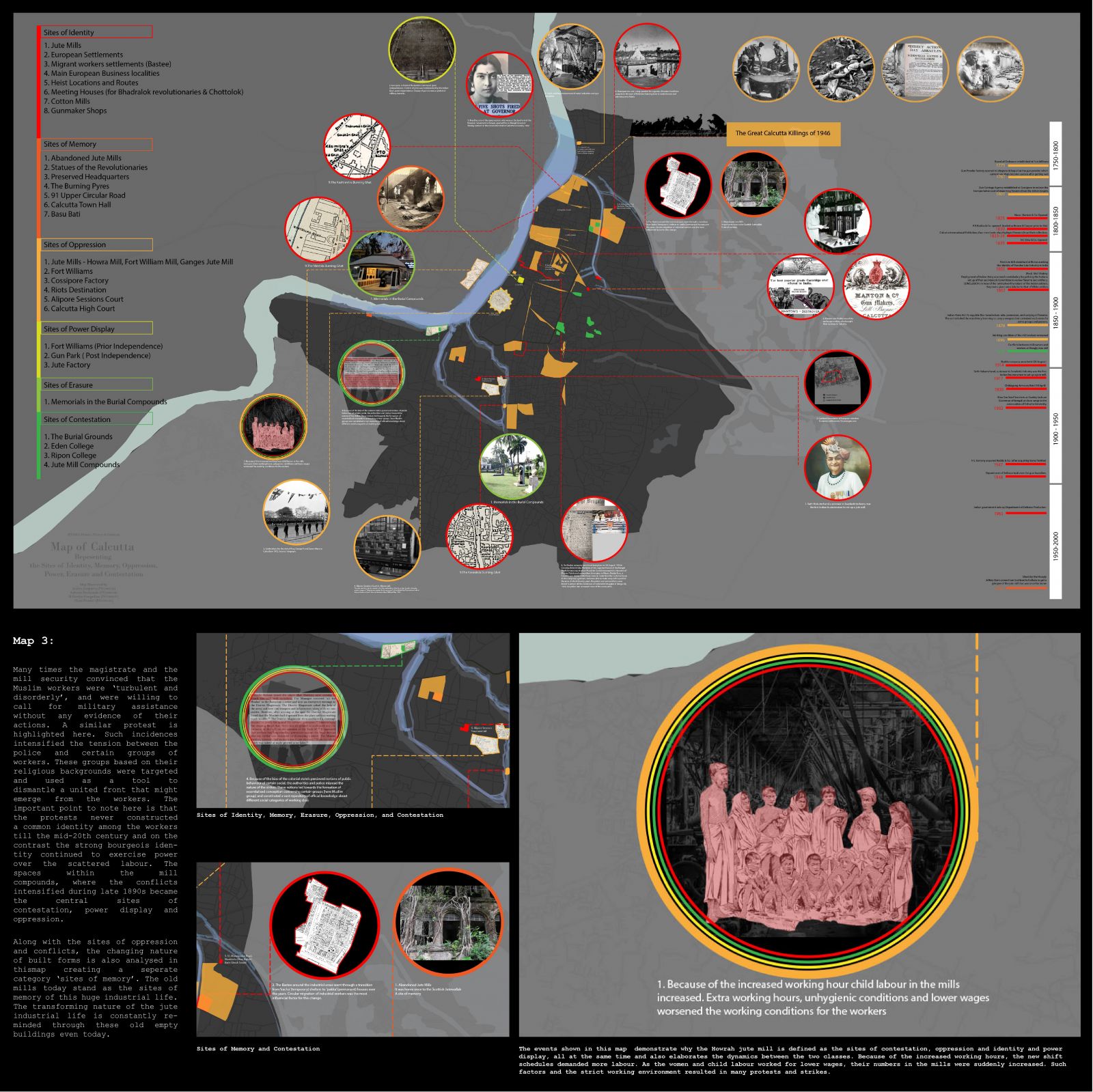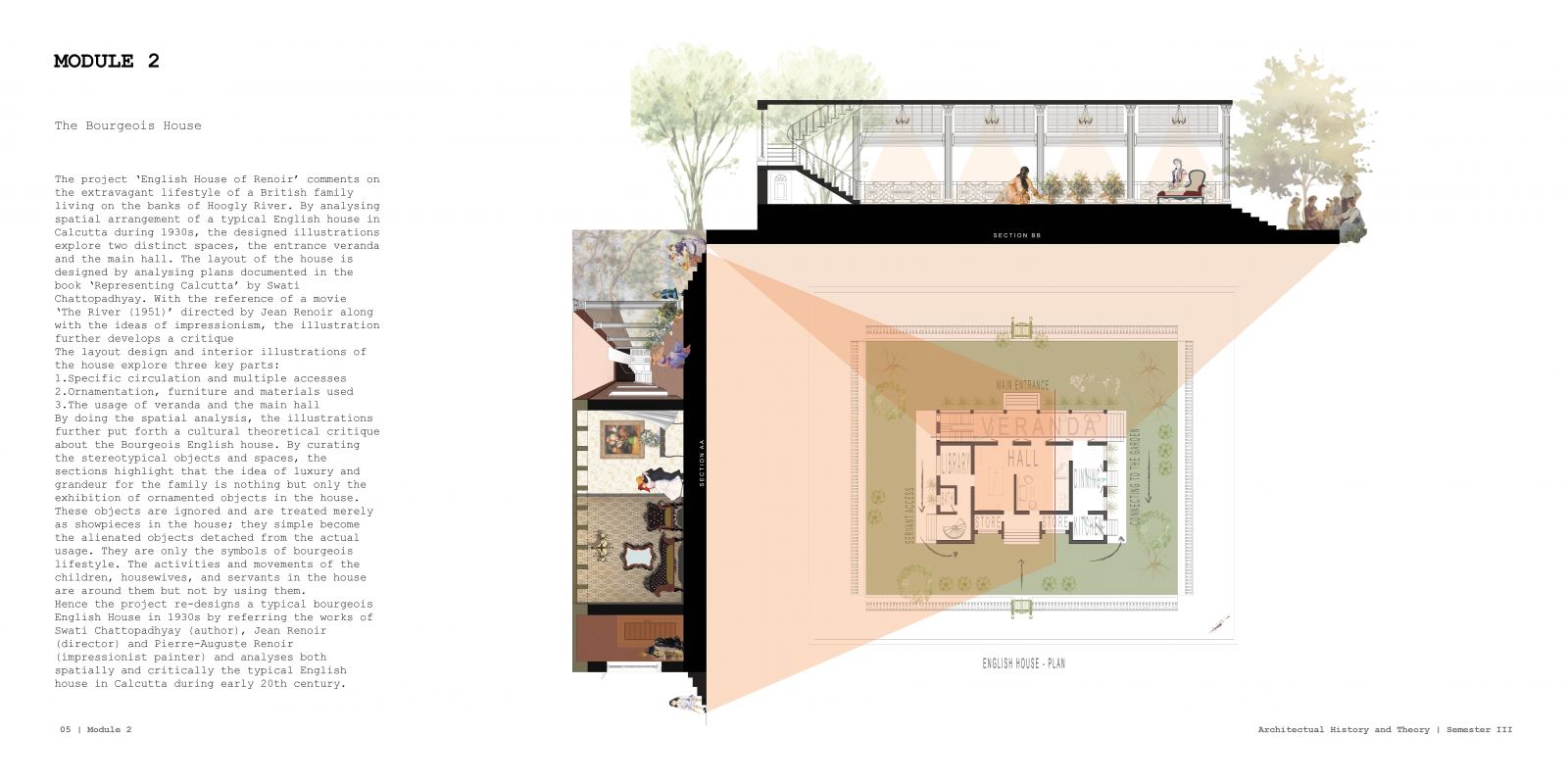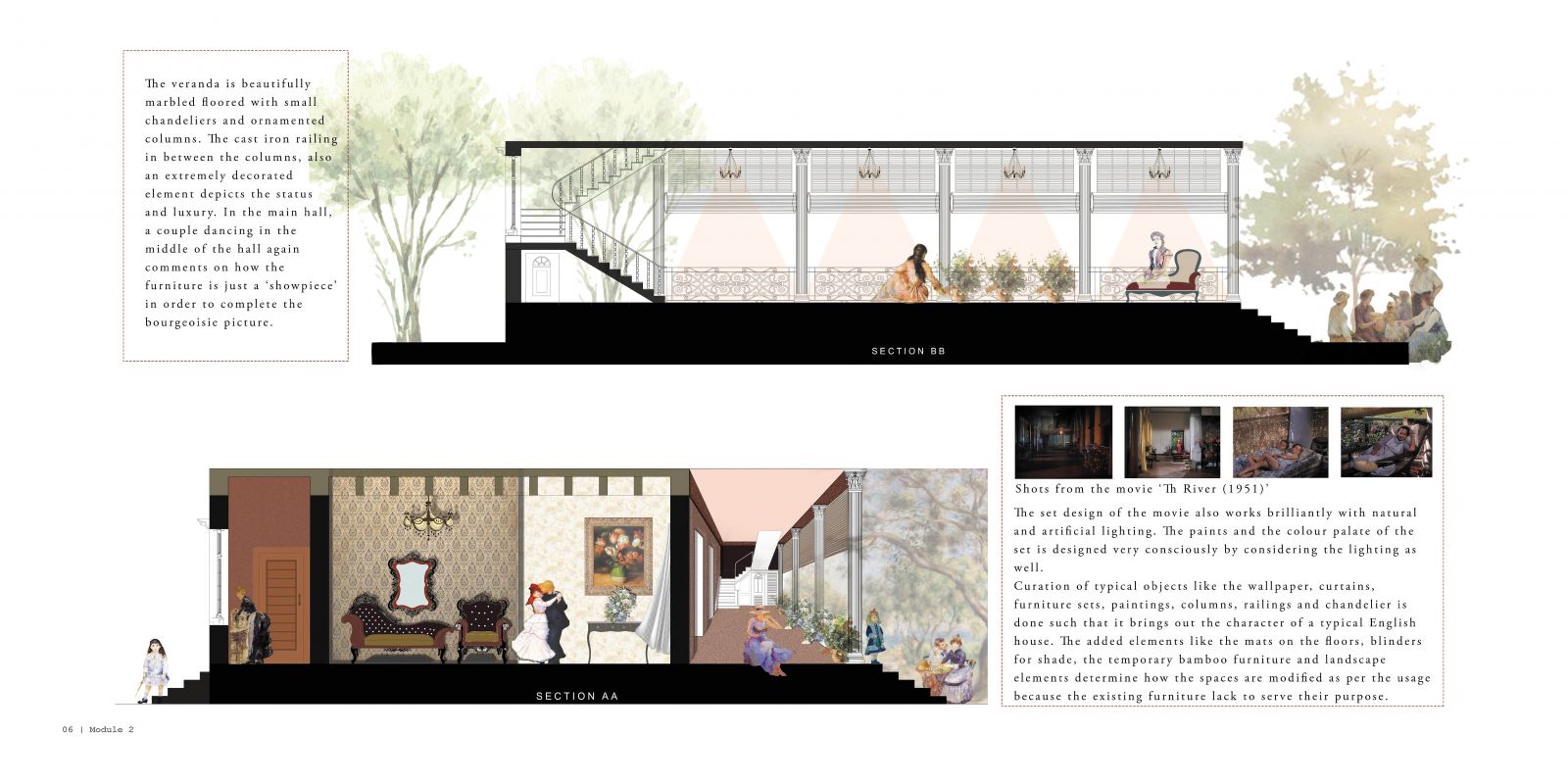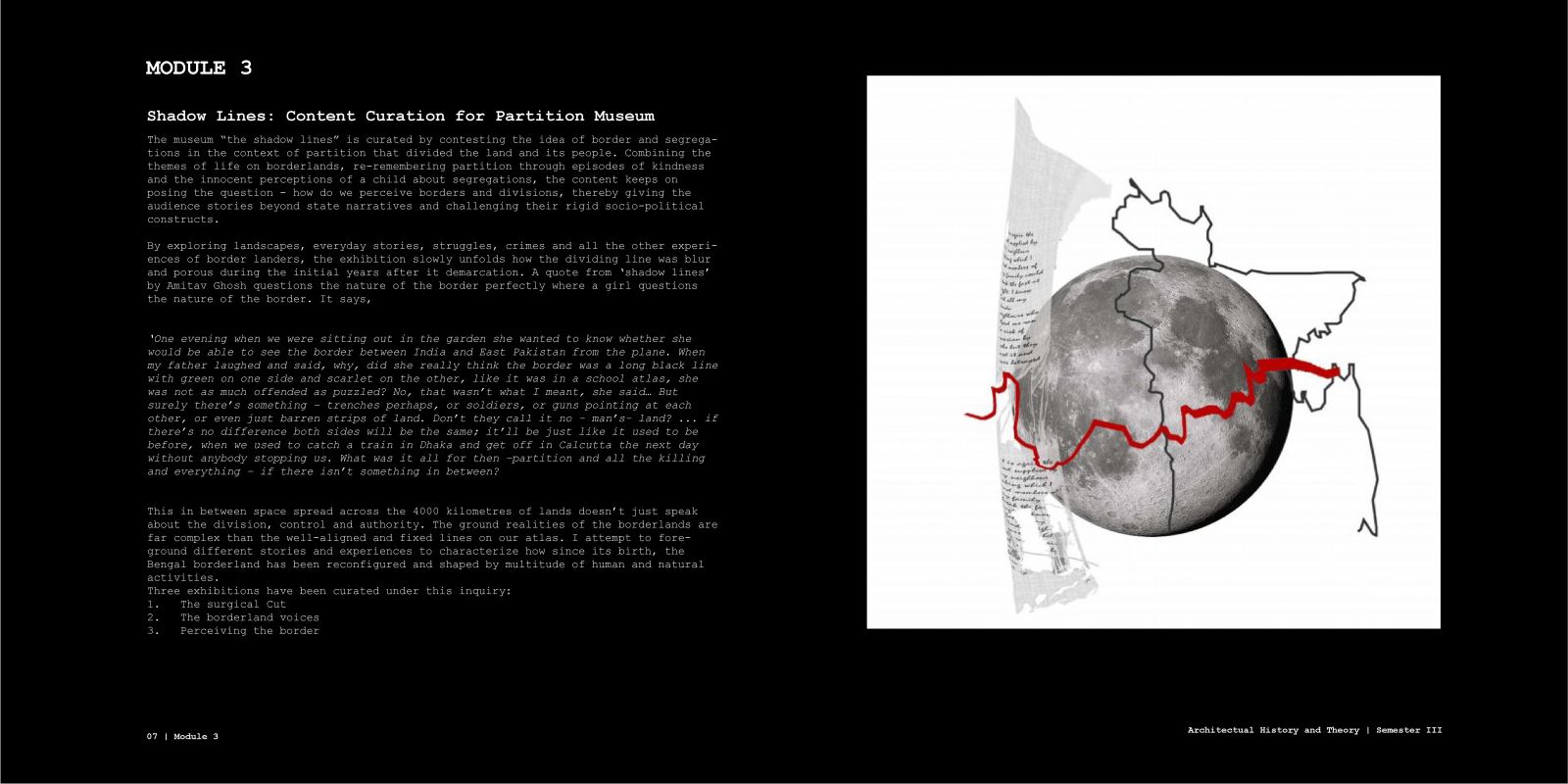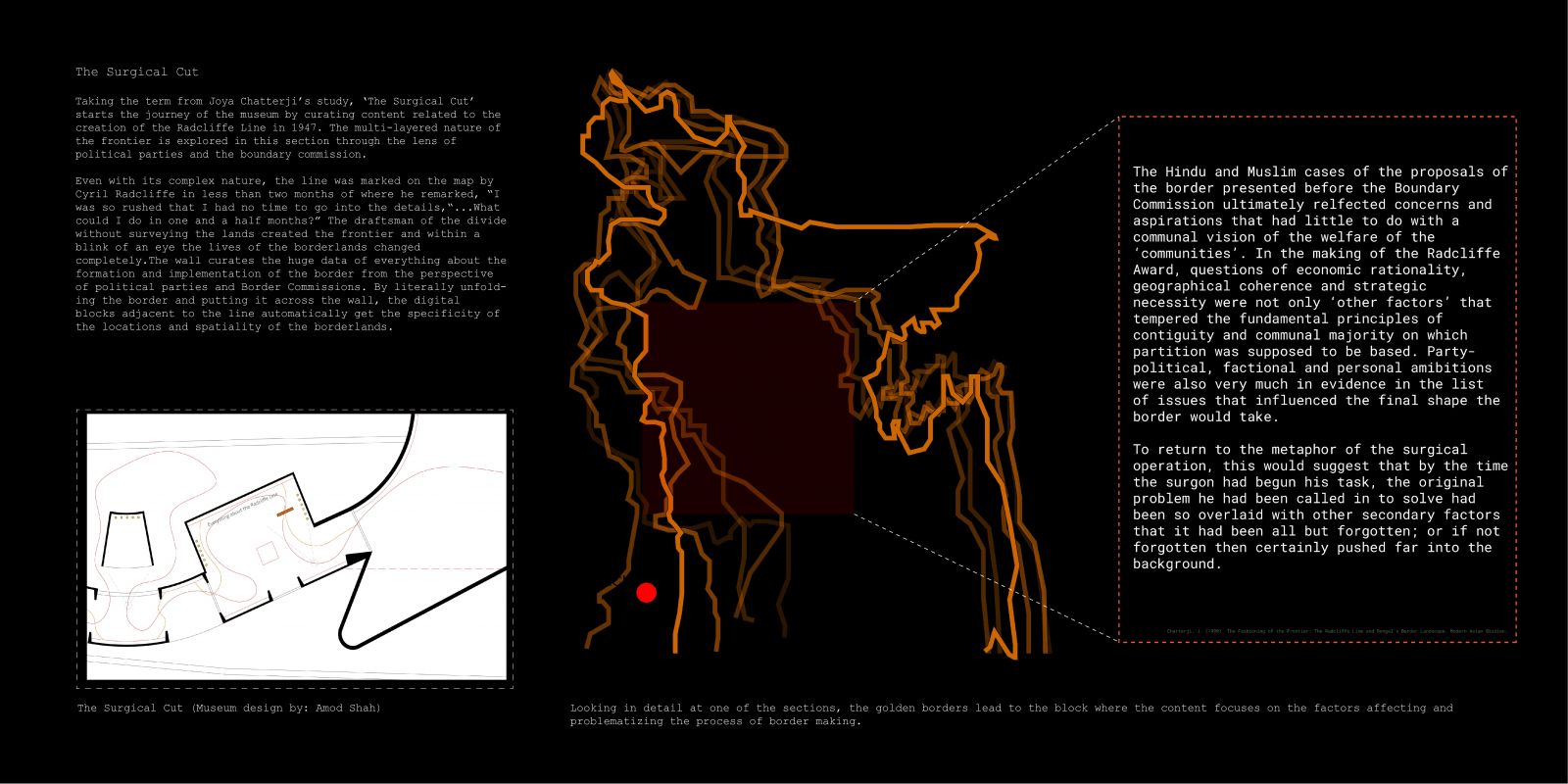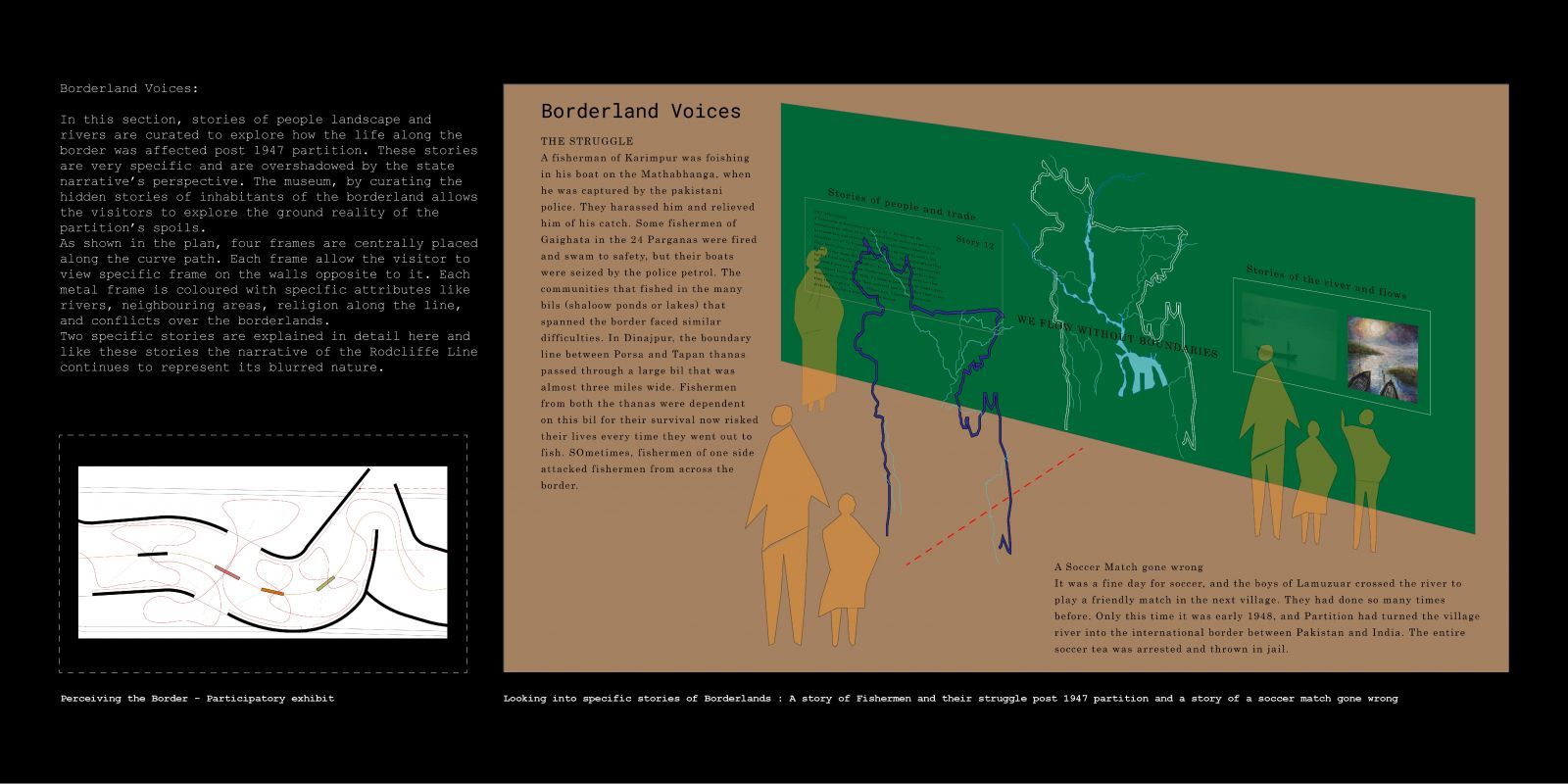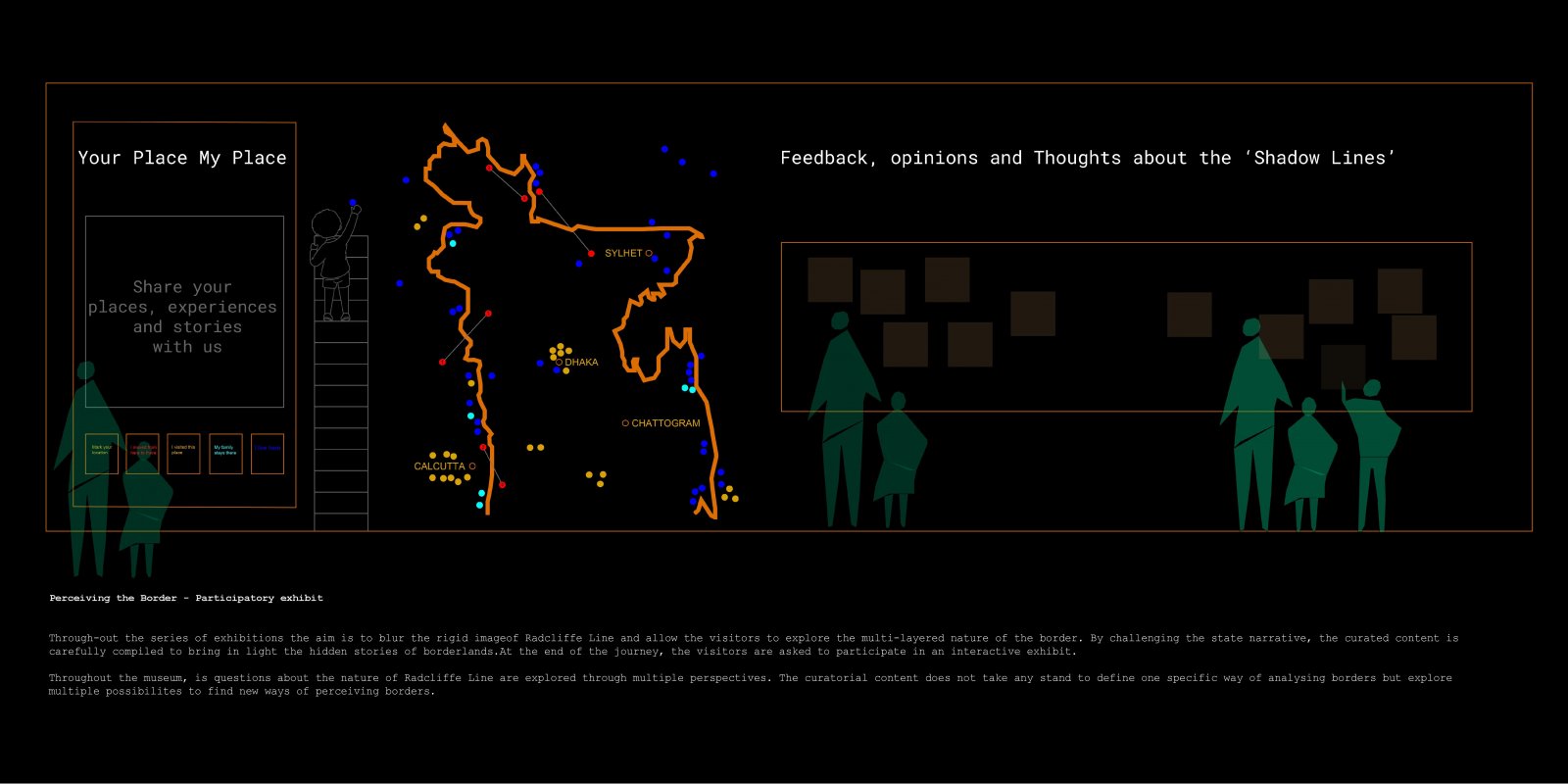Your browser is out-of-date!
For a richer surfing experience on our website, please update your browser. Update my browser now!
For a richer surfing experience on our website, please update your browser. Update my browser now!
The three modules explore three key aspects of Bengal Partition: 1. History of Calcutta during the 19th century, 2. A building typology typical to bourgeois English lifestyle of the city during 1930s and 3. Bengal partition by analysing Radcliffe Line. By taking identity as the central historiographical position, the palimpsest maps explore the life around jute industry. The second module explores the movies, impressionist paintings and archival readings as tools to analyse typical English house of a jute merchant in the city while the third module dwells on the details of Radcliffe line to create curatorial content beyond state narratives.
View Additional Work